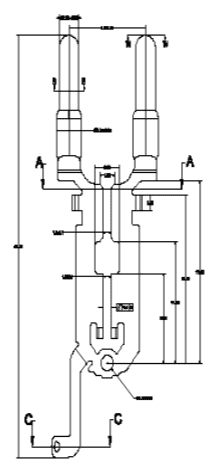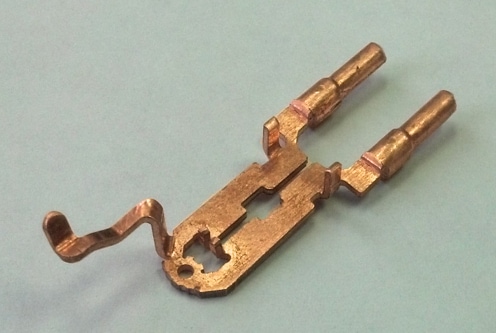Case Study: How Redesigning a Prototype Led to an Efficient and Cost-Effective Solution for Automotive OEM
An automotive OEM customer had designed a part for an electrical application. It included two solid pins that were to be welded to the base terminal. This added expense and extra time to the manufacturing process.
The precision stamping challenge
As designed, the part required solid metal pins to be sourced and purchased, then welded onto a stamped base terminal. This introduced the cost of acquisition for the pins as well as the expense of precision welding. The engineering challenge was in finding a way to make the process more efficient and cost-effective for large-scale production.
CEP’s solution
The solution illustrates how a stamper can analyze and modify the part design to improve the manufacturing process and reduce costs. CEP developed a prototype that includes the pins and that is made of a single piece of material. The pin feature was integrated into the stamping by forming a completely sealed barrel. With this approach, the pins and base were made as a unit so no additional components were needed and no welding required.

